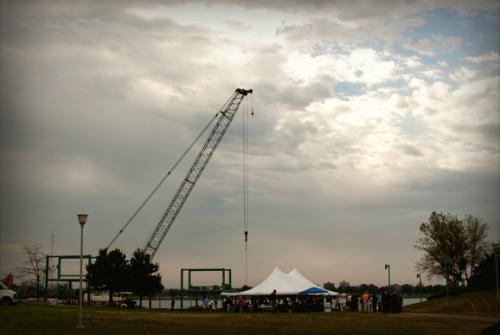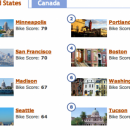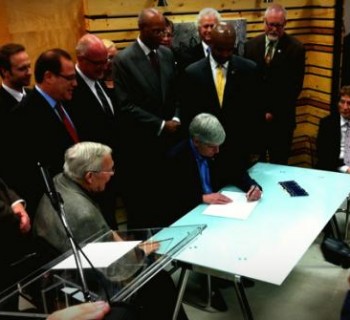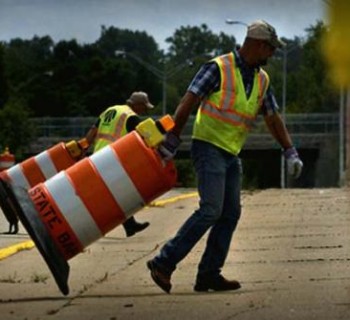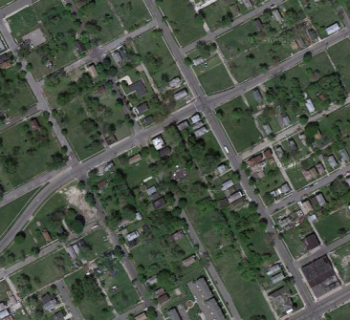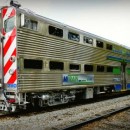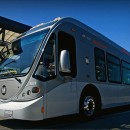DETROIT — By the end of 2013, Detroit residents, as well as visitors from Michigan and abroad, can enjoy thorough connectivity of Detroit’s east Riverwalk, which begins near Joe Louis Arena and, when finished, will extend to Gabriel Richard Park, just east of Belle Isle.
At the groundbreaking ceremony held Monday, July 23, at Mt. Elliot Park in Detroit, municipal and state leaders gathered with officials from public and private organizations to commence the final phase of construction for the east Riverwalk development.
The first phase of the Detroit RiverFront Conservancy’s east Riverwalk vision, when completed, will take walkers and bikers from Joe Louis Arena 3.3 miles east to Gabriel Richard Park. The final phase of it, which is now under construction, includes a redesign of Mt. Elliott Park and will include a new, open-air pavilion (similar to the one at Rivard Plaza), a sunken schooner-themed interactive water park, a playscape with drum seats and sound chimes, and ornamental landscaping.
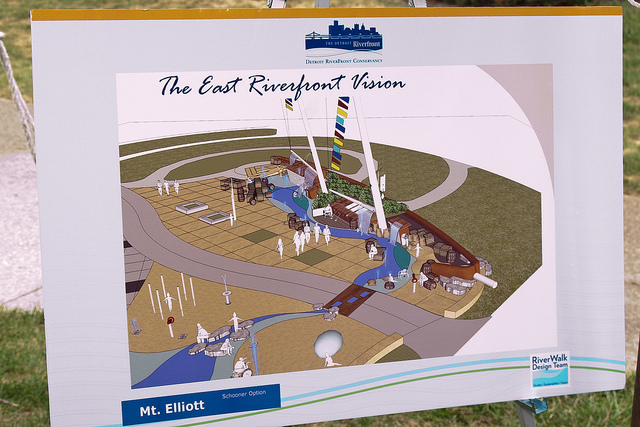 Conservancy CEO Faye Nelson says all new park elements will be “universally accessible” to people of all ages and those with disabilities.
Conservancy CEO Faye Nelson says all new park elements will be “universally accessible” to people of all ages and those with disabilities.
The former Uniroyal manufacturing site, currently a brownfield and now undergoing remediation, will eventually serve as a large greenspace for residents as well as the connecting portion for the Riverwalk from Mt. Elliott Park to Richard Park, which is just east of the MacArthur Bridge.
Additional phases for the completion of the eastern portion of the Riverwalk will include a new parking lot for Richard Park, new pathways and lighting enhancements. The DRC will also incorporate sustainable design principles such as rainwater catch systems for garden beds and a bicycle and pedestrian path that will connect the park to Jefferson Avenue.
"As I look across the country, many cities are going back to their rivers, back to their waterfronts and using it as a draw to bring people there to show off their waterfront,” said Steudle. “They can’t compete with this: This is natural and it’s best we have anywhere in North America.”
Nelson says none of the DRC's vision would have been possible without their public-private partnership, which has provided funding and resources for the project since its inception in 2003. The partnership includes the Kresge Foundation, General Motors, the Department of Natural Resources and Environment (DNRE) and their trust fund, the Michigan Department of Transportation (MDOT) and others.
Nelson also said the project could never have happened without help from the city of Detroit, as well as U.S. Senator Carl Levin, who has helped secure more than $40 million for the development, $29 million of which is from the Federal Highway Transportation fund.
Rodney Stokes, former director of the DNRE, who manages the DRC-DNRE partnership, said the DNRE will use money from trust fund to purchase easements from the DRC, allowing the state to provide public access to the riverfront “in perpetuity.” Part of the fund also includes a $15 million endowment for the DRC to provide long-term maintenance and operations of the Riverwalk.
“As I look across the country, many cities are going back to their rivers, back to their waterfronts and using it as a draw to bring people there to show off their waterfront,” said MDOT Director Kirk Steudle, who will administer the funds. “They can’t compete with this: This is natural and it’s best we have anywhere in North America.
“As a resource, the river played a very key role in the development of the city through the centuries,” Stuedle added. “The next phase of construction moves towards completion and it’s a critical step in our region and our state’s economic recovery.”
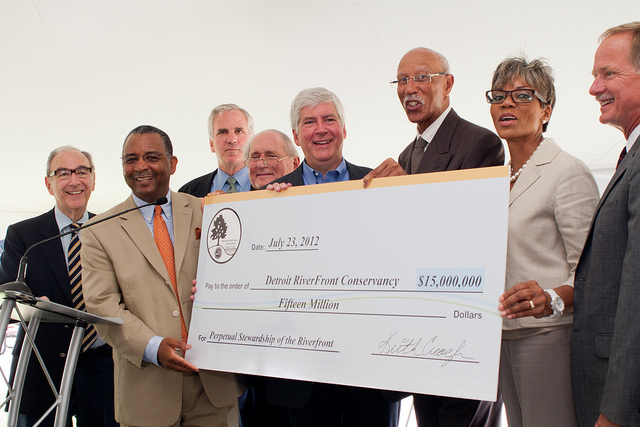 Levin’s comments echoed with Steudle’s. “The people are being connected with our river and people are being reconnected to each other,” he says. “A big part of the renewal is part of the renewal of our town. The dream is coming true. It’s a dream that’s been a part of so many for so many decades and we’re finally getting our river back.”
Levin’s comments echoed with Steudle’s. “The people are being connected with our river and people are being reconnected to each other,” he says. “A big part of the renewal is part of the renewal of our town. The dream is coming true. It’s a dream that’s been a part of so many for so many decades and we’re finally getting our river back.”
“We had a lot of challenges, and there still are, but meeting all these challenges is all truly inevitable. One of those challenges is the west Riverfront, and we have funding available,” Levin said.
According to Stokes, one of the first bills Gov. Rick Snyder signed into law when he assumed office was for the inclusion of $30 million for development on the Detroit River in the DNRE's trust fund. Those funds are what enabled the state to purchase the easements.
“It’s about showing how you can take economic development, environmentalism and community and combine them in a result where all can win,” Snyder said. “Too often we spend time on challenges and we do need to solve those challenges, but it’s really important we celebrate the successes — that’s what we’re going to build on to make this a great city again.”
“We’re looking forward to opportunities going forward on the western portion [as well], so we ultimately have a Riverwalk that goes from bridge, to bridge, to bridge,” Steudle said.


